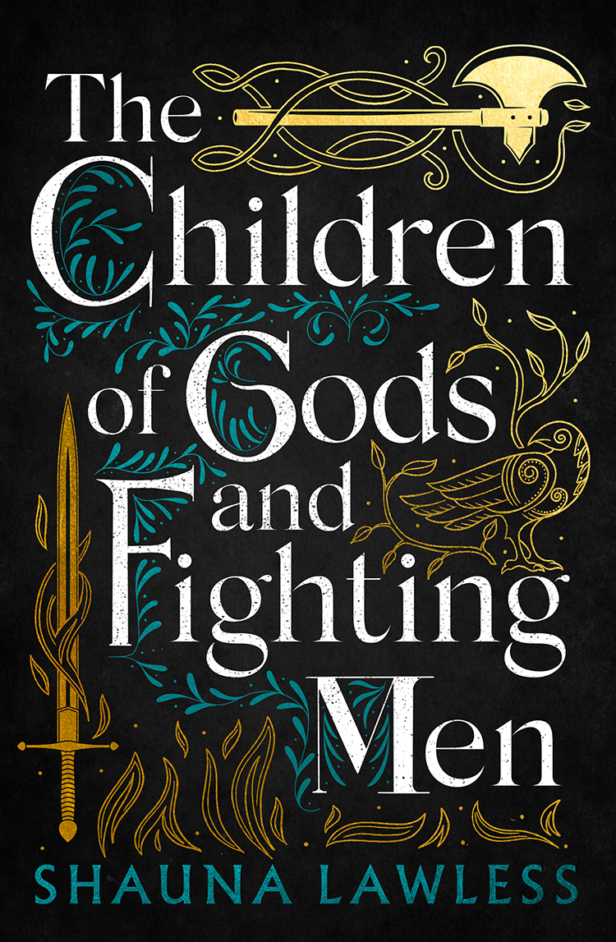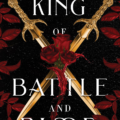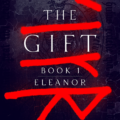When I started writing my book, The Children of Gods and Fighting Men, I was determined to set my story in Ireland. A few people have asked me why, and my answer was that Irish mythology has inspired so many well-known fantasy stories that it felt only right Ireland should be used as the actual location in this instance. This drew blank stares. Irish mythology has been used as inspiration in fantasy? Really?
Yes, it has. Many times. And so, my friends, let’s take a walk into some of my favourite fantasy stories with links to Irish mythology. I’ve always enjoyed spotting the similarities and now you will know them too!
(As a side note, many mythologies around the world are similar, so I am not in any way discounting that other mythologies may have been the key influence on these stories. I’m merely pointing out the links to Irish myth that I have noticed.)
The Lord of the Rings by J.R.R Tolkien
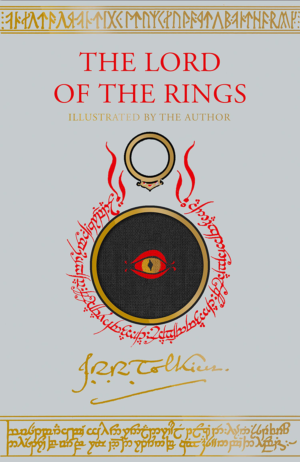
The Dark Lord Sauron is the epitome of all evil in The Lord of the Rings and is depicted as a lidless eye ‘rimmed with fire’ that sits atop the tower of Barad-dûr.
As soon as I read these passages describing Sauron, I noted the similarity to Balor of the Evil Eye from the mythological cycle of Irish mythology. For those unfamiliar with Irish mythology, a magical tribe known as the Fomorians invaded Ireland and enslaved the native people. The Fomorians were known for their greed and poor hospitality, and Balor of the Evil Eye was greatly feared. He is described as having one eye in the middle of his forehead, which had seven eyelids. As he opened each eyelid the air around him would grow warmer, then the plants would wilt and die, until eventually his final eyelid would open, and fire would be unleashed on his enemies.
Much like the battle by the Black Gate, where the armies of Gondor and Rohan unite against the forces of Mordor, there was a great battle in Irish mythology called The Second Battle of Moytura. Here the mortal men of Ireland joined forces with another magical tribe, known as the Tuatha Dé Danann, and together fought against the Fomorian army. After a long battle, the Fomorians were finally defeated by Lugh of the Longarm, who used a slingshot to shoot a stone at King Balor just as he was opening his final eyelid. The stone shot right through Balor’s skull, causing his fire to shoot backwards which decimated his own army who stood behind him, rather than the mortal army who stood before him.
The Rigante Series by David Gemmell
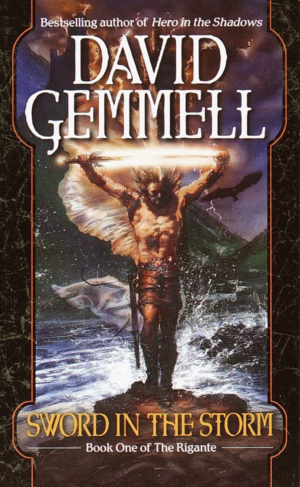
The link with Irish mythology comes through quite a few times but is at its most prominent with the inclusion of the character Morrigu, who is inspired by the Tuatha Dé Danann prophet known as The Morrígan. Just like Morrigu in the story, Morrígan can foretell death and see the future, and is both helpful and malevolent. In the famous Irish story, The Táin, (which is set within the Ulster cycle of Irish mythology) Morrígan appears to Cú Chulainn several times and on one of those occasions she foretells his death, however, in The Second Battle of Moytura (mentioned above in the comparison to The Lord of the Rings) she helps the Tuatha Dé Danann defeat the Fomorians.
The other aspect of this story that I enjoyed was the inclusion of a ‘geasa’, which is a curse that is placed upon a person, and to break the curse will lead to that person’s death. In Sword in the Storm, we meet a young man called Varaconn. His geasa is that he will die within a week of killing a raven. As a battle looms, he rides his horse which tramples and kills a raven, and thus by the end of the week, he dies as was foretold.
When Cú Chulainn is young, he is told that if he was ever to eat the meat of a hound he would die. However, in Ireland at the time it was a great dishonour to reject the hospitality of another. And so, in the story, The Violent Death of Cú Chulainn, it is The Morrígan who taunts him into eating hound meat (as she is incensed that he has scorned her love) and as soon as he eats it, he loses all strength from his sword arm and cannot fight his enemies who are already on their way to find him.
The Wheel of Time Series by Robert Jordan
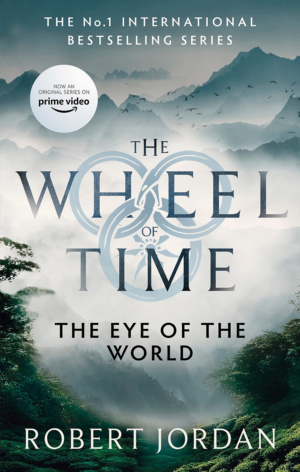
The Wheel of Time famously uses a lot of world mythology, which is one of the things I enjoyed about it. Irish mythology is by no means the most prominent, however, it does feature. The tribe of the Tuatha’an, who follow ‘the way of the leaf’ is the one that caught my eye the most, as the name so closely resembles that of the Tuatha Dé Danann.
Another naming similarity is that of the Aes Sedai themselves – which is close to the ‘Aes Sídhe’. Coincidently, this is another name for the people of the Tuatha Dé Danann in Irish folklore after they have been banished to the otherworld.
Like the Aes Sedai, the Tuatha Dé Danann had magical powers. They could regrow whole limbs, make trees move, make magical potions, and drain rivers dry. Eventually they were defeated by another tribe of people called The Milesians and the Tuatha Dé Danann travelled to the ‘otherworld’ which is said to be an underground land. The myths say that the Tuatha Dé Danann can come out of the otherworld to visit the world of mortals, but that mortals cannot see the otherworld or travel there. In Irish folklore, the people who lived in the otherworld stopped being called the Tuatha Dé Danann and became known as the Aes Sídhe.
A Court of Thorns and Roses by Sarah J. Mass
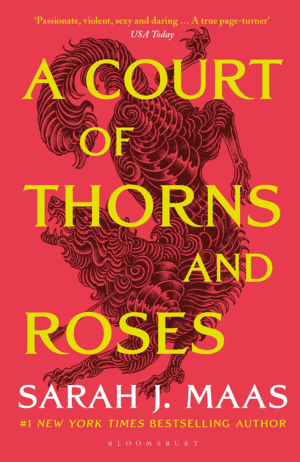
At the start of A Court of Thorns and Roses, Feyre kills a wolf – a wolf who turns out to be of the fae. The next day, a Lord of the Faerie realm visits Fayre to tell her the punishment for killing the fae is either death or that she must come to live in the faerie realm. This reminded me very much of a story called The Only Jealousy of Emer from the Ulster cycle of mythology.
In this story, Cú Chulainn strikes down two beautiful birds, thinking to give their feathers to his wife, Emer. However, these two birds are actually Fand and Lí Ban of the Tuatha Dé Danann who have come from the otherworld. As punishment, they appeared to him, beat him, and took away his strength, though Cú Chulainn’s friends could not see this. However, a war is underway in the otherworld and Lí Ban visits Cú Chulainn who is so weak he can only lie in his bed and says she will return his strength if he agrees to come and fight in the otherworld for her. Cú Chulainn agrees and wins their war in the otherworld, but as he spends time there, he falls in love with Fand, who is the wife of Manannán Mac Lir. Thus begins a tragic love story between a Tuatha Dé Danann woman and mortal man.
American Gods by Neil Gaiman
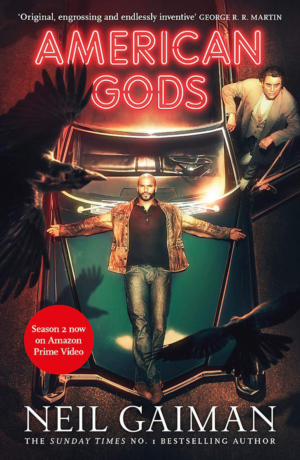
The fact that Neil Gaiman uses world mythology in his book American Gods will surprise no one. However, not many people know about the inspiration behind the character of Mad Sweeny. In American Gods, he claims to be a leprechaun, however, in the Kings cycle of Irish mythology he was a King of Dal nAraidi in Ulster, called Buile Shuibhne. One day, Buile Shuibhne falls out with Saint Ronan – who consequently turns Sweeny (the anglicised pronunciation of Shuibhne) mad and curses him so he will wander the land until he dies.
It is important to note that in the mythology, he is not a leprechaun, as leprechauns don’t exist in Irish mythology, only Irish folklore. However, like the Aes Sídhe, leprechauns are derived from the Tuatha Dé Danann after they were banished to the otherworld. As stories evolved in Ireland, it was imagined that the Tuatha Dé Danann would visit the mortal realm, though by now they were thought of as small mischievous fairies who would trick you or steal your children.
The Children of Gods and Fighting Men by Shauna Lawless is out now. Buy your copy here.
